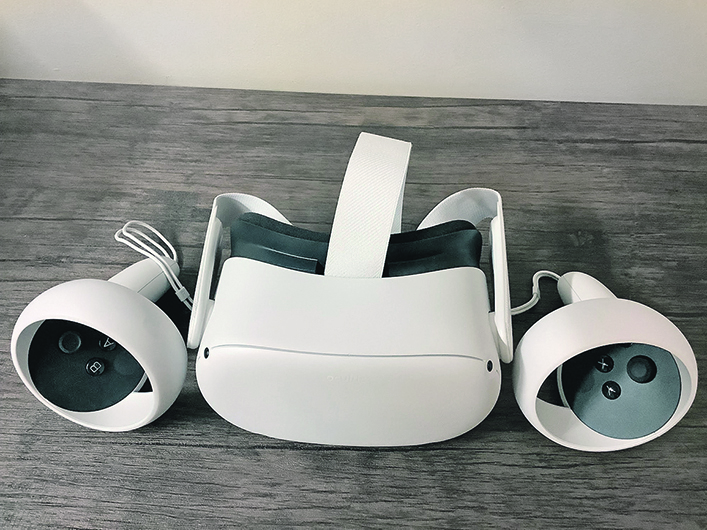The University of Calgary uses virtual reality technology to create a simulation of a dairy farm for convenient public access
People who’ve never set foot on a dairy farm can now explore a simulation using virtual reality headsets as part of a project launched by the University of Calgary.
“It was really neat to see in a whole different way how the dairy farm can be portrayed to the consumers and the public,” said Tietsia Huyzer of Huntcliff Dairy Ltd. near Olds, Alta.
“And without it being invasive, or taking a drive or really a lot of effort, they can take a peek in the barn and have a view at what is happening there, and I think that’s a good starting point for conversation with the public — like, what is happening really nowadays on the dairy farm?”
The university’s Simpson Centre for Food and Agricultural Policy worked with the Schulich School of Engineering to create a simulation of a dairy farm involving virtual reality technology.
People can view the farm through a goggle-like headset, allowing them to turn their heads to see different vantage points within a seamless panoramic view. It makes it appear as if they are inside the simulation.
It consists of computer graphics of a barn that includes dairy cows that move and make sounds. A handheld controller allows users to move in different directions as well as aim what appears in the simulation to be a beam of light.
It can be pointed at representations of people and video screens in the barn to launch short video clips of experts to explain different aspects of dairy farming and agriculture. One of them was Simpson Centre policy analyst Emma Windfeld.
Read Also

Quebec pork company calls for transparency around gene-edited pigs
Quebec-based pork company duBreton is calling for transparency around meats from gene-edited pigs on concerns that a lack of mandatory labelling will confuse consumers, and dilute certification claims. The organic sector is also calling for labelling rules.
The Simpson Centre is considering creating other simulations involving different sectors of agriculture, said Tarra Drevet, manager of business operations. The decision to use virtual reality technology was aimed at younger people who are familiar with video games, she said.
She appreciated that the dairy farm simulation gives users the option to choose where to go next.
“You can look at the feeding stalls. You can talk to a veterinarian and learn more about how we’re using antibiotics on the farm, or cow-calf separation,” she said.
“And these topics were intentionally chosen as sometimes controversies, or simply farmer-animal interaction that happens on the farm, which really gets back to the practices and what people don’t know about what goes into making their food.”

Huyzer was on hand during a recent public event involving patrons at the Central Library in downtown Calgary. People were surprised they didn’t hear the cows mooing in the simulation, she said.
“And yeah, we reply to that with a video from the barn to say that the cow is only mooing when she needs to communicate — when she is in distress, when she is in pain, when she is in heat, so when a cow is content and just eating and making milk, you will not hear that cow.”
Huyzer became involved in the project in spring because developers needed someone with a background in dairy farming. She said it was a “great opportunity” to remove some misconceptions while answering “basic questions that give people an insight on what’s happening on a farm and why we are crucial for food production, and not only food production, but also for the maintenance of the environment.”
There is increasing societal pressure about reducing the use of farm animals to cut greenhouse gases. However, Huyzer has boosted her farm’s efficiency by switching from Holstein to Jersey cows, which she said require less feed and space.
People who are concerned about the environmental impact of dairy farming need to look at the complete picture, she said.
“I think there will always be a place in the whole food system for dairy products, (which) have a high nutritional value.”
Animal rights groups have also targeted what they see as the inherently inhumane use of animals in agriculture. However, Huyzer’s dairy farm uses a robotic milking system in which cows decide when to be milked.
Besides reducing mastitis, a painful inflammation of the mammary glands in cows, it has also improved milk production, she said.
“And the cow will go there because she’s fed a really tasty pellet that is driving her to go and visit the robot.”
The Simpson Centre is considering working with Alberta Milk to develop further phases of the virtual reality dairy farm project, said Drevet.
“I see it moving into a classroom setting and also into a larger event where it can be more experiential, with tastes and smells from the farm, panel discussions and Q and As.”


















